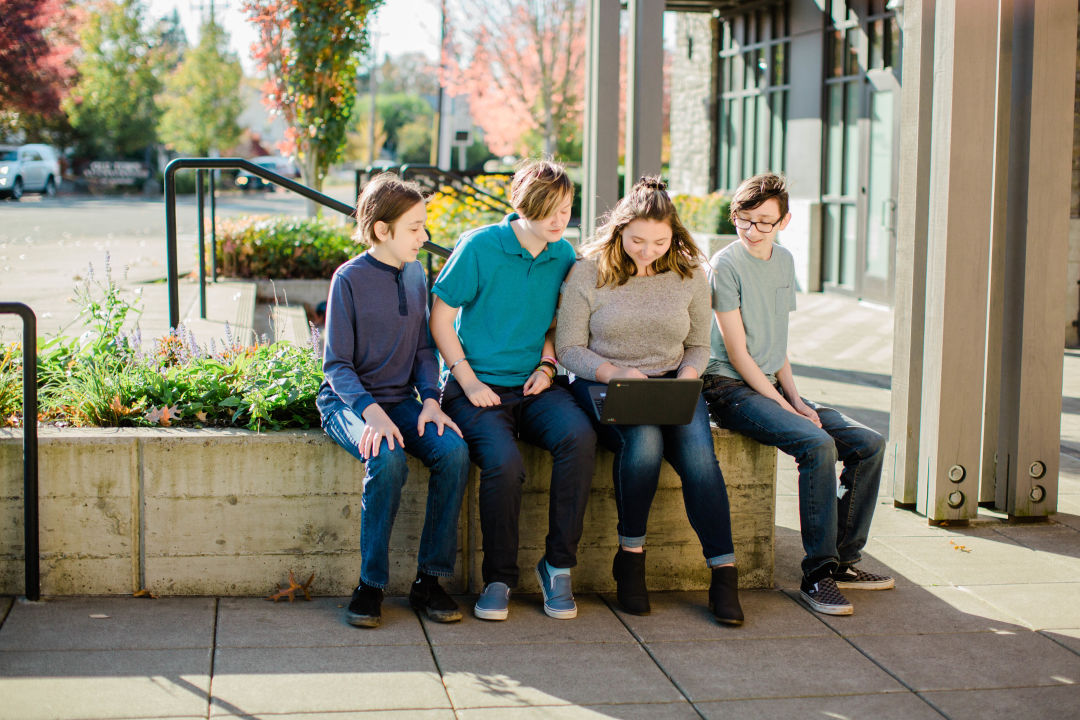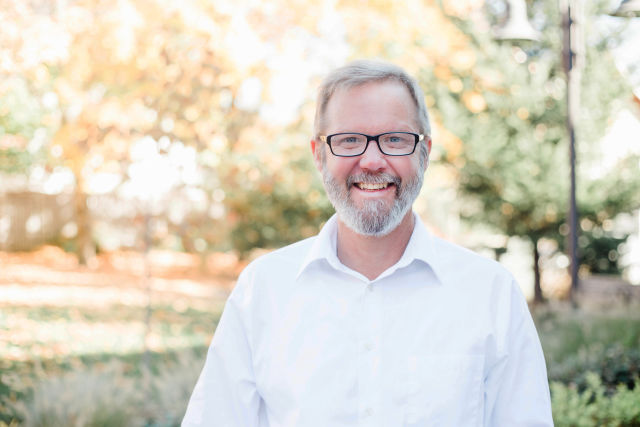Students Reach for the Stars

Students at Oregon Charter Academy have added outer-space outreach to their virtual educations.
Teaching kids to reach for the stars is all part of the job for educators. But at Oregon Charter Academy (ORCA), they don’t stop there. In fact, through innovative partnerships with NASA, students can also communicate with the stars—or at least those living among the stars at the International Space Station.
For 15 years, the entirely virtual public school has made STEM (science, technology, engineering, and mathematics) education a focus point for its students, bolstering their curriculum with exciting field trips to places such as OMSI or labs at universities statewide. Sometimes teachers even utilize ORCA’s fully equipped teleconferencing facility in Wilsonville, where students participate in science experiments that can then also be fully broadcast to others in their homes.
In the wake of COVID-19, everything had to go online—a realm that ORCA is comfortable operating in, having done so since its founding in 2005. In 2019, however, the school ventured into the lesser-explored territory of outer space. Elementary School Principal Dan Vasen, a self-professed science geek and environmental education grant writer, was approached that year by James Loftus, the founder and director of the Joseph Phillip Loftus Jr. Mobile Museum—and the son of its namesake, who was a career NASA employee.

ORCA Elementary School Principal Dan Vasen
Loftus wanted Vasen to know about the new JPL Mobile Museum opportunity known as RADIOS (Remote and Distant Interactive Online Sessions), which is funded by a generous grant from the Santiam Hospital and PacifiCorp Foundation to provide STEM enrichment by accessing content offered by NASA’s Space Center Houston (SCH).
“Once a month, SCH hosts educational programming,” Vasen said. “We were one of the schools that, through our partnership with JPL Mobile Museum, were able to provide these remote assemblies once a month to our students last year.”
Through these engaging live streams, students are given a virtual tour of the SCH, highlighting various exhibits and artifacts from the space program to take remote learning to new heights. More than 350 ORCA students, across the K-12 grade levels, have been involved with the eight RADIOS sessions hosted by the school since the partnership began. Vasen even ventured to NASA’s SCH himself to take numerous pictures of the facilities, curating resources so teachers could incorporate them into their lessons or presentations.
The opportunities for space exploration don’t end there. When an article about ORCA’s participation in RADIOS ran in a local newspaper, Jay Hennigan—a retired engineer and member of the Salem Amateur Radio Club (SARC)—reached out to Vasen to share some information about another exciting opportunity: the Amateur Radio on the International Space Station (ARISS) program.
“It’s a widespread, worldwide program where organizations—not just schools but libraries, HAM radio clubs, etc.—can apply to do a real-time, live HAM radio contact with astronauts on the ISS. The ARISS program has been going on for almost 30 years, but there is a lot of competition to participate,” Vasen said. “It is intended to provide emotional support and serve as a psychological community-building event for the astronauts themselves, as they live in isolation on the space station. It is also a backup system to stay in radio communication with the space station in case of a major outage of their traditional communication methods.”
With his interest piqued, Vasen and a team of ORCA colleagues set out to author their official application for ARISS, a yearlong undertaking that required many phases of planning, research, and outreach. In January 2020, they were approved to do an ARISS contact this year, becoming the first all-virtual school and just the second school in Oregon ever to be selected.
“ORCA students who sign up to participate in this free program are going to be getting curriculum integrations focused on STEM and NASA education components all year,” Vasen said. “The actual assembly, which is tentatively scheduled to take place in the third week of December, will literally be like 10 minutes long, given the window for HAM radio contact with the ISS. Our students will be asking questions of real astronauts on the space station in real time and having a back-and-forth conversation. It's going to be very cool.”
Contingency plans are in place in case of disruptive weather or superseding ISS mission priorities. Selected students will come prepared with 18–20 preapproved questions to relay using HAM radio protocols (e.g., “roger that” and “over and out”). To take full advantage of the narrow time frame, questions submitted for consideration must be able to be answered concisely and must be worth answering at all (i.e., no astronaut bathroom inquiries). A video stream of the virtual assembly will be shared with other students via Zoom, and several other schools and government representatives will be invited to tune in through ORCA’s Facebook page.
Recently, the world witnessed the first all-female spacewalk, focused attention on the Neowise comet, and celebrated the 50th anniversary of the Apollo moon landing. And the SpaceX Crew Dragon launch commenced an era of private space flight—so in a sense, the stars have aligned this year to increase awareness of STEM, astronomy, and related professions. Students' interest in space has never been higher, and ORCA is fueling their dreams of science careers.
---
Student Activities
Oregon Charter Academy
www.oregoncharter.org
503-897-2272
Mailing: PO Box 1129, Mill City, OR 97360
Physical: 833 NW Santiam Blvd, Mill City, OR 97360




